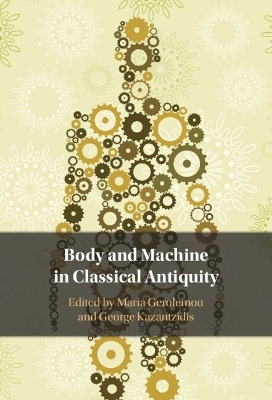
Body and Machine in Classical Antiquity
Cambridge University Press (Verlag)
978-1-316-51466-5 (ISBN)
This innovative and wide-ranging volume is the first systematic exploration of the multifaceted relationship between human bodies and machines in classical antiquity. It examines the conception of the body and bodily processes in mechanical terms in ancient medical writings, and looks into how artificial bodies and automata were equally configured in human terms; it also investigates how this knowledge applied to the treatment of the disabled and the diseased in the ancient world. The volume examines the pre-history of what develops, at a later stage, and more specifically during the early modern period, into the full science of iatromechanics in the context of which the human body was treated as a machine and medical treatments were devised accordingly. The volume facilitates future dialogue between scholars working on different areas, from classics, history and archaeology to history of science, philosophy and technology.
MARIA GEROLEMOU is currently a Research Fellow at the Center for Hellenic Studies, Harvard. She has published widely on ancient Greek drama, specifically on gender and madness, on Wunderkultur and on ancient science and technology. She is the author of Technical Automation in Classical Antiquity (2023). GEORGE KAZANTZIDIS is an Assistant Professor of Latin Literature in the Department of Philology at the University of Patras. He is particularly interested in the history of mental illness and the history of emotions in antiquity. His book Lucretius on Disease: The Poetics of Morbidity in De rerum natura was published in 2021. He is currently working on a monograph provisionally entitled: Greek and Roman Wonders: Medicine, Horror, the Sublime.
Part I. Blended Bodies: 1. More than a thing: figuring hybridity in archaic poetry and art Deborah Steiner; 2. Automata, cyborgs, and hybrids: bodies and machines in Antiquity Jane Draycott; 3. Not yet the android: the limits of wonder in ancient automata Isabel A. Ruffell; Part II. The Technological Body: 4. Technical physicians and medical machines in the Hippocratic Corpus Maria Gerolemou; 5. The empirical, art, and science in Hippocrates' On Joints Jean De Groot; 6. Hippocrates' Diseases 4 and the technological body Colin Webster; Part III. Towards the Mechanization of the Human Body: 7. Aristotle on the lung and the bellows-lungs analogy Giuli Korobili; 8. The ill effect of south winds on the joints in the human body: Theophrastus, De ventis 56 and pseudo-Aristotle, Problemata 1.24 Robert Mayhew; 9. The Beauty that lies within; Anatomy, mechanics and thauma in Hellenistic Medicine George Kazantzidis; 10. The mechanics of the heart in Antiquity Matteo Valleriani; 11. The mechanics of Galen's Theory of Nutrition Orly Lewis; 12. Iatromechanism and Antiquarianism in Morgagni's Studies on Celsus, 1720–1761 Marquis Berrey.
| Erscheinungsdatum | 20.07.2023 |
|---|---|
| Zusatzinfo | Worked examples or Exercises; 14 Halftones, color; 8 Line drawings, black and white |
| Verlagsort | Cambridge |
| Sprache | englisch |
| Maße | 158 x 235 mm |
| Gewicht | 630 g |
| Themenwelt | Geschichte ► Allgemeine Geschichte ► Vor- und Frühgeschichte |
| Geisteswissenschaften ► Philosophie ► Philosophie Altertum / Antike | |
| Studium ► Querschnittsbereiche ► Geschichte / Ethik der Medizin | |
| ISBN-10 | 1-316-51466-8 / 1316514668 |
| ISBN-13 | 978-1-316-51466-5 / 9781316514665 |
| Zustand | Neuware |
| Informationen gemäß Produktsicherheitsverordnung (GPSR) | |
| Haben Sie eine Frage zum Produkt? |
aus dem Bereich


